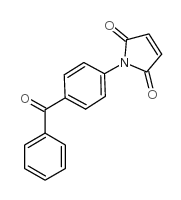Cross-link formation between mutant galectins of Caenorhabditis elegans with a substituted cysteine residue and asialofetuin via a photoactivatable bifunctional reagent.
Mayumi Tamura, Tomoharu Takeuchi, Takamasa Nonaka, Ken-Ichi Kasai, Yoichiro Arata
文献索引:Biol. Pharm. Bull. 34(6) , 929-32, (2011)
全文:HTML全文
摘要
LEC-1 is the first tandem repeat-type galectin isolated from an animal system; this galectin has two carbohydrate recognition domains in a single polypeptide chain. Because its two lectin domains have different sugar-binding profiles, these domains are thought to interact with different carbohydrate ligands. In our previous study, we showed that a mutant of LEC-1 in which a cysteine residue was introduced at a unique position in the N-terminal lectin domain (Nh) can be cross-linked with a model glycoprotein ligand, bovine asialofetuin, by using a bifunctional photoactivatable cross-linking reagent, benzophenone-4-maleimide. In the present work, we applied the same procedure to the C-terminal lectin domain (Ch) of LEC-1. Cross-linked products were formed in the cases of two mutants in which a cysteine residue was introduced at Lys¹⁷⁷ and Ser²⁶⁸, respectively. This method is very useful for capturing and assigning endogenous ligand glycoconjugates with relatively low affinities to each carbohydrate recognition domain of the whole tandem repeat-type galectin molecule.
相关化合物
| 结构式 | 名称/CAS号 | 分子式 | 全部文献 |
|---|---|---|---|
 |
4-(N-马来酰亚胺基)二苯甲酮
CAS:92944-71-3 |
C17H11NO3 |
|
Subunit interactions in the clathrin-coated vesicle vacuolar...
1999-10-08 [J. Biol. Chem. 274(41) , 28909-15, (1999)] |
|
Using a low denaturant model to explore the conformational f...
2012-02-21 [Biochemistry 51(7) , 1369-79, (2012)] |
|
A cross-linking study of the N-terminal extension of human c...
2003-09-02 [Biochemistry 42(34) , 10324-32, (2003)] |
|
Formation and properties of smooth muscle myosin 20-kDa ligh...
1991-08-01 [Arch. Biochem. Biophys. 288(2) , 584-90, (1991)] |
|
Identification of the site of photocross-linking formed in t...
1991-02-05 [J. Biol. Chem. 266(4) , 2272-5, (1991)] |